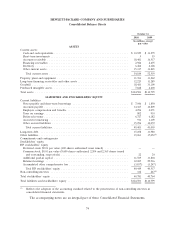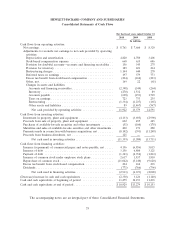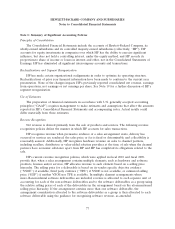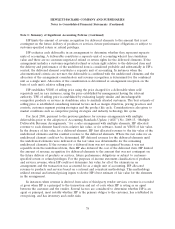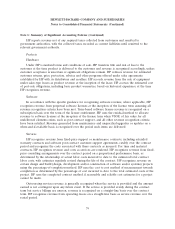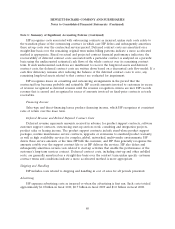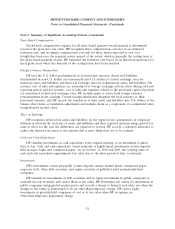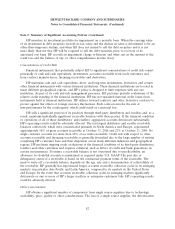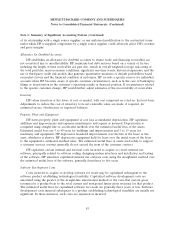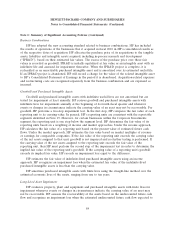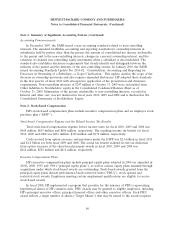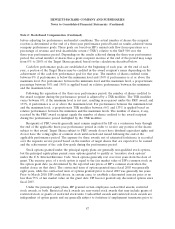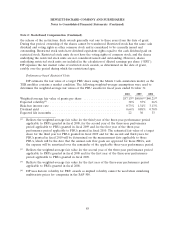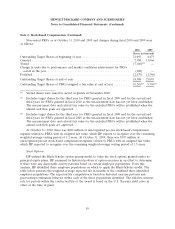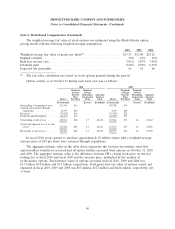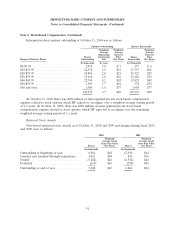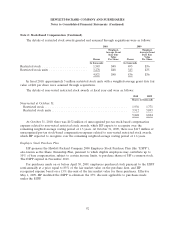HP 2010 Annual Report Download - page 90
Download and view the complete annual report
Please find page 90 of the 2010 HP annual report below. You can navigate through the pages in the report by either clicking on the pages listed below, or by using the keyword search tool below to find specific information within the annual report.HEWLETT-PACKARD COMPANY AND SUBSIDIARIES
Notes to Consolidated Financial Statements (Continued)
Note 1: Summary of Significant Accounting Policies (Continued)
HP monitors its investment portfolio for impairment on a periodic basis. When the carrying value
of an investment in debt securities exceeds its fair value and the decline in value is determined to be an
other-than-temporary decline, and when HP does not intend to sell the debt securities and it is not
more likely than not that HP will be required to sell the debt securities prior to recovery of its
amortized cost basis, HP records an impairment charge to Interest and other, net in the amount of the
credit loss and the balance, if any, to other comprehensive income (loss).
Concentrations of Credit Risk
Financial instruments that potentially subject HP to significant concentrations of credit risk consist
principally of cash and cash equivalents, investments, accounts receivable from trade customers and
from contract manufacturers, financing receivables and derivatives.
HP maintains cash and cash equivalents, short- and long-term investments, derivatives and certain
other financial instruments with various financial institutions. These financial institutions are located in
many different geographical regions, and HP’s policy is designed to limit exposure with any one
institution. As part of its cash and risk management processes, HP performs periodic evaluations of the
relative credit standing of the financial institutions. HP has not sustained material credit losses from
instruments held at financial institutions. HP utilizes forward contracts and other derivative contracts to
protect against the effects of foreign currency fluctuations. Such contracts involve the risk of
non-performance by the counterparty, which could result in a material loss.
HP sells a significant portion of its products through third-party distributors and resellers and, as a
result, maintains individually significant receivable balances with these parties. If the financial condition
or operations of all of these distributors’ and resellers’ aggregated accounts deteriorate substantially,
HP’s operating results could be adversely affected. The ten largest distributor and reseller receivable
balances collectively, which were concentrated primarily in North America and Europe, represented
approximately 18% of gross accounts receivable at October 31, 2010 and 22% at October 31, 2009. No
single customer accounts for more than 10% of accounts receivable. Credit risk with respect to other
accounts receivable and financing receivables is generally diversified due to the large number of entities
comprising HP’s customer base and their dispersion across many different industries and geographical
regions. HP performs ongoing credit evaluations of the financial condition of its third-party distributors,
resellers and other customers and requires collateral, such as letters of credit and bank guarantees, in
certain circumstances. To ensure a receivable balance is not overstated due to uncollectibility, an
allowance for doubtful accounts is maintained as required under U.S. GAAP. The past due or
delinquency status of a receivable is based on the contractual payment terms of the receivable. The
need to write off a receivable balance depends on the age, size and a determination of collectability of
the receivable. HP generally has experienced longer accounts receivable collection cycles in its emerging
markets, in particular Asia Pacific and Latin America, compared to its markets in the United States
and Europe. In the event that accounts receivable collection cycles in emerging markets significantly
deteriorate or one or more of HP’s larger resellers or enterprise customers fails, HP’s operating results
could be adversely affected.
Other Concentration
HP obtains a significant number of components from single source suppliers due to technology,
availability, price, quality or other considerations. The loss of a single source supplier, the deterioration
82




